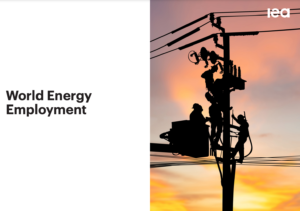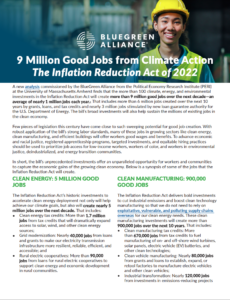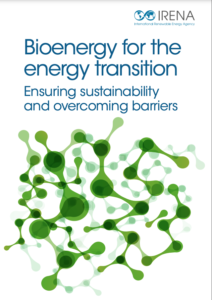The OurEnergyLibrary aggregates and indexes publicly available fact sheets, journal articles, reports, studies, and other publications on U.S. energy topics. It is updated every week to include the most recent energy resources from academia, government, industry, non-profits, think tanks, and trade associations. Suggest a resource by emailing us at info@ourenergypolicy.org.
Resource Library
141 to 150 of 343 item(s) were returned.
Electric vehicles are more popular than ever. As demand rises and policies provide essential incentives, states need to act fast to ensure they are prepared to accommodate an influx of EVs. Most EV charging takes place at work or home, but a significant number of Americans live in apartments or condo buildings, which are often unequipped for charging. Thus, state funds and policies must be directed at ensuring all people can access and charge EVs.
This report outlines key policy recommendations for states and analyzes the potential impacts of a California ballot measure designed to boost EV adoption and charging …
View Full ResourceThe State of Maryland has begun its transition to a deeply decarbonized economy, building upon over a decade of climate change mitigation efforts, including work led by the State. To achieve the State’s climate goals, which were updated and accelerated in the Climate Solutions Now Act of 2022 to target a net zero economy by 2045, it will be critical for Maryland to reduce emissions from buildings, industry, and transportation sectors. E3 worked with Baltimore Gas and Electric (BGE) to explore the necessary transformations needed in BGE’s service territory to accomplish the State’s goals. As the largest utility in Maryland, …
View Full ResourceWhen it comes to decarbonization and beneficial electrification, the looming electric vehicle wave receives most of the attention. But reducing building emissions is an equally critical part of the solution. In fact, energy use by buildings – both residential and commercial – contributes approximately 27 percent of global CO2 emissions – much of which stems from heating and cooling. Beyond carbon reduction, home and building electrification is now being pursued with added urgency as a matter of global security and economic stability amid both gas price and political volatility.
We’ve developed this Heat Pump Adoption and Beneficial Electrification Playbook to …
View Full ResourceThis report attempts to better understand why cities are failing to meet their targets and what can be learned from the planning practices that are working well. By evaluating the most comprehensive decarbonization plans across 50 of the country’s largest cities, the report judges how well the strategies and actions in these plans prepare cities for meaningful, accountable decarbonization. Using 25 standardized criteria and interviews with local practitioners to judge city decarbonization plans, we find:
-
– Most plans have long-term decarbonization goals, but less than one-third (32%) have detailed benchmarks and reporting.
– Only about one-quarter (28%) of plans include
An energy transition is underway. New technologies, including for power generation, transmission and distribution, energy storage, transportation, manufacturing, and buildings, are arising. They are increasingly deployed to reduce climate-altering emissions, enhance energy reliability and resilience, and strengthen economic competitiveness. They offer not only the hope for a sustainable energy future but also for new and growing economic development opportunities for states in every region of the nation. These technologies also engender worries about reliable availability of the minerals and elements essential to their production. The energy transition will be a commodities transition too.
Many state energy officials and their economic …
View Full ResourceThe industrialised world cannot function without steel. It is essential to everything from the buildings we live in to the ways we get around. Wood Mackenzie estimates that meeting global steel demand will require 2.2 billion tonnes of production by 2050 – a 15% increase from 2021.
From iron ore mining to steel manufacturing, the industry is highly carbon intensive. And while steel itself is recyclable, iron and steel production emit a combined 3.4 billion tonnes of carbon annually, equal to 7% of global emissions. The steel industry, therefore, faces a huge challenge in achieving net zero emissions by 2050.…
View Full ResourceThe inaugural edition of the World Energy Employment Report is – to the best of our knowledge – the first comprehensive inventory of the global energy workforce.
The report presents new estimates of the size and distribution of the labour force, across regions and technologies, and increases the granularity on the number of workers along the entire energy value chain. This includes fossil fuel and bioenergy production; power sector generation, transmission, distribution and storage; and end uses, including vehicles and energy efficiency for buildings and industry. It also details segments of the value chain where these jobs are located, including …
View Full ResourceThe Energy Futures Initiative (EFI) convened two virtual events, titled “Building the Gulf Coast Clean Hydrogen Market.” A 2.5-hour public webinar was held June 1, 2022, followed by a 1.5-hour private roundtable on June 2. The purpose of these workshops was to hear from tenured hydrogen companies in the Gulf Coast about the opportunities and challenges of leveraging the region’s infrastructure and expertise for transitioning to clean hydrogen (hydrogen that is produced with low- or zero-carbon emissions).
A major focus of the discussions centered around the economic considerations in animating additional investment in clean hydrogen. Contrasting with previous waves of …
View Full ResourceA new analysis commissioned by the BlueGreen Alliance from the Political Economy Research Institute (PERI) at the University of Massachusetts Amherst finds that the more than 100 climate, energy, and environmental investments in the Inflation Reduction Act will create more than 9 million good jobs over the next decade—an average of nearly 1 million jobs each year. That includes more than 6 million jobs created over the next 10 years by grants, loans, and tax credits and nearly 3 million jobs stimulated by new loan guarantee authority for the U.S. Department of Energy. The bill’s broad investments will also help …
View Full ResourceThis IRENA report provides an overview of the challenges and related policy measures required to scale up the deployment of key bioenergy applications. It assesses potential sustainability aspects and highlights the significance of a policy framework that includes sustainability-based target setting and long-term planning; cross-sector co-ordination for bioenergy; sustainability governance supported by regulations and certification schemes; as well as integration of bioenergy policy making with the Sustainable Development Goals (SDGs). The report also provides policy recommendations for overcoming barriers to bioenergy deployment for clean cooking, heating in buildings, electricity production, and both industrial and transport applications.…
View Full Resource








